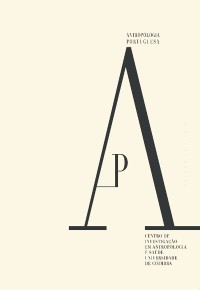Please use this identifier to cite or link to this item:
https://hdl.handle.net/10316.2/47731| Title: | Variação anatómica: análise de caracteres não-métricos do esqueleto pós-craniano em escravos africanos dos séculos XV–XVII (Lagos, Portugal) | Other Titles: | Anatomical variation: analysis of non-metric traits of the postcranial skeleton in African slaves from the 15th–17th centuries (Lagos, Portugal) | Authors: | Antunes, Sofia Fagundes, Leoni Lauricio Wasterlain, Sofia N. Ferreira, Maria Teresa |
Keywords: | Non-metric morphology;long bones;Valle da Gafaria;Morfologia não-métrica;ossos longos;Valle da Gafaria | Issue Date: | 2019 | Publisher: | Imprensa da Universidade de Coimbra | Abstract: | In 2009, the skeletons of 158
individuals were recovered from an urban
dump (15th–17th centuries) in Lagos (Portugal).
The biological profile of the individuals, the
intentional modifications of their teeth, as
well as the funerary and historical context
support the hypothesis of them being African
slaves. The present study aims to evaluate
the frequency of non-metric characters in
the skeletons of these individuals by sex and
side in order to identify specific characters
of this sample. All of the adult individuals in
the collection (N=101) were included in the
study. A total of 29 anatomical variations were
sought-after in eight bones of the postcranial
skeleton (clavicle, scapulae, humerus,
radius, ulna, femur, patellae and tibiae).
Nine of these characters were not found
whereas the remaining 20 were recorded
with frequencies between 1.8% and 96.1%. Only one character (costoclavicular sulcus)
showed statistically significant differences
between sexes. Six characters (suprascapular
bevel, septal aperture, medial trochlear bevel,
hypotrocanterial fossa, vast external bevel
and lateral squat facet) presented differences
between the two sides of the skeleton.
No specific character was found for this
population sample. Em 2009, foram descobertos, em Lagos (Portugal), os esqueletos de 158 indivíduos inumados numa lixeira dos séculos XV–XVII. As condições de descarte dos indivíduos, o seu perfil biológico, as modificações intencionais dos seus dentes e o contexto histórico de Lagos suportam a hipótese de se ter tratado de escravos africanos. No presente estudo, pretendeuse avaliar a frequência de caracteres nãométricos nos esqueletos destes indivíduos, bem como diferenças entre sexos e lateralidades, de modo a identificar eventuais caracteres específicos desta amostra. Foram incluídos no estudo os 101 indivíduos adultos da coleção. Foram investigadas 29 variações anatómicas de oito pares de ossos do esqueleto pós-craniano (clavícula, escápula, úmero, rádio, ulna, fémur, patela e tíbia), das quais nove não foram encontradas. As restantes 20 foram registadas com frequências compreendidas entre 1,8% e 96,1%. Apenas um carácter (sulco costoclavicular) demonstrou diferenças significativas entre os dois sexos. As lateralidades revelaram-se diferentes em seis caracteres (chanfradura supraescapular, abertura septal, chanfradura troclear medial, fossa hipotrocanteriana, chanfradura do vasto external e faceta de agachamento lateral). Quando comparados com a literatura, os resultados obtidos não permitiram identificar qualquer carácter específico desta amostra populacional. |
URI: | https://hdl.handle.net/10316.2/47731 | ISSN: | 0870-0990 2182-7982 (PDF) |
DOI: | 10.14195/2182-7982_36_5 | Rights: | open access |
| Appears in Collections: | Antropologia Portuguesa |
Files in This Item:
| File | Description | Size | Format | |
|---|---|---|---|---|
| variacao_anatomica__analise_de_carateres_nao-metricos.pdf | 484.01 kB | Adobe PDF |  |
Items in DSpace are protected by copyright, with all rights reserved, unless otherwise indicated.
